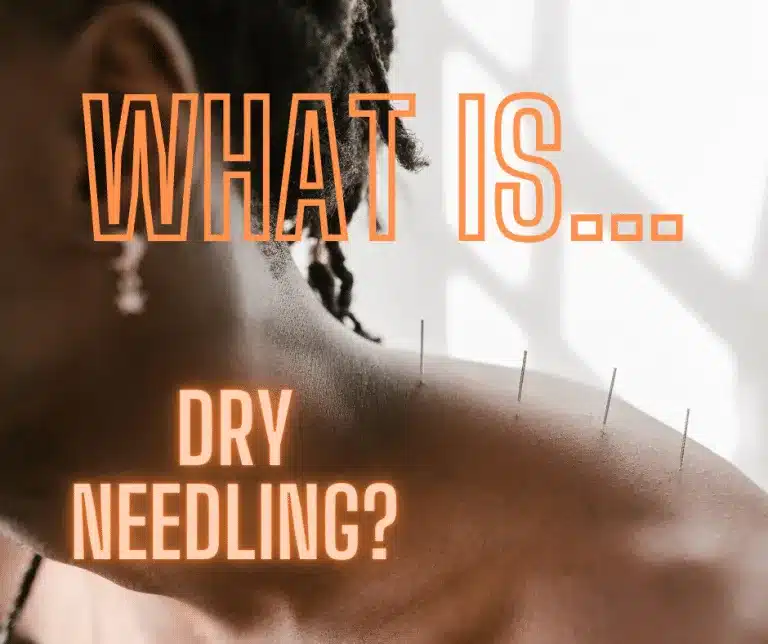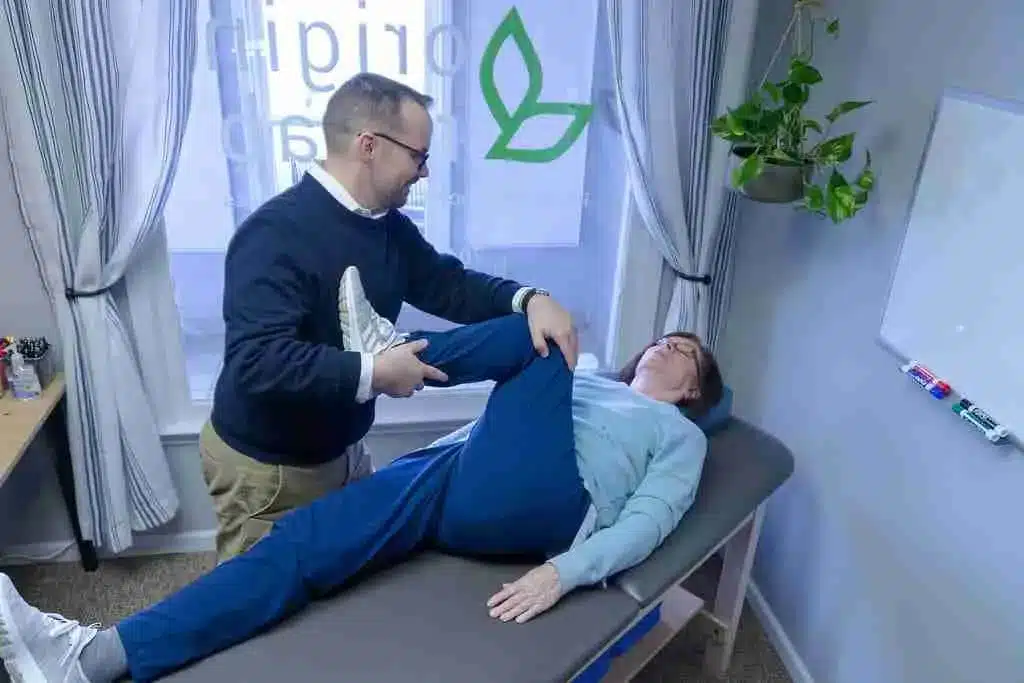We get a lot of questions about dry needling from patients who have heard about the procedure from a friend or family member. Other times, we recommend dry needling to patients who have not previously considered it but may benefit. Understanding the procedure and dispelling myths about what dry needling is and is not will help you decide whether it’s for you.
Certification to Perform Dry Needling
In 2010 later updated in 2017, the Federation of State Boards of Physical Therapy, an organization that advises state regulatory boards regarding physical therapy policy development, first published a white paper (link here) detailing the required to safely perform dry needling in a clinical setting. They determined that roughly 85% of the knowledge required to safely perform dry needling was required of entry level clinical staff. The remaining 15%, primarily needle technique and clinical decision making regarding the need for dry needling, could be learned through classroom study, lab practice, and testing.
Knowing that your provider is an expert in the technique and has been specifically certified to perform needling can help ease initial fears. The physical therapist at Origin Rehabilitation is certified in dry needling through the American Academy of Manipulative Therapy (AAMT). It is our strict policy that any clinician performing dry needling be certified by a recognized industry educational leader. We can perform dry needling treatment at our physical therapy clinic in Mint Hill or through our mobile service.

What is Trigger Point Dry Needling?
Dry needling is a procedure where a very thin needle is used to penetrate the skin to reach the trigger point or “knot” within the muscle. These trigger points can cause pain and limit movement. A variety of techniques can be used which can include either removal of the needles immediately or leaving the needle(s) in place for a period of up to 20 minutes.
Once the needle has been placed, the physical therapist may manipulate the needle in several ways depending on the intent of the treatment. The needle may be left in place for a period of time, moved up and down with a technique known as “pistoning”, turned until resistance or stretching is felt. Pistoning with movement, often in a circle is known as fanning or coning and used to effect a wider area than pistoning alone could. Twisting until resistance is felt then gently pulling is a technique known as “tenting” and used to stretch very specific tissue.
Dry needling is not acupuncture. We do not claim to know what acupuncture is and all that it can do but understand it to be a key component of traditional Chinese medicine using needles at strategic places on the body to influence energy flow and treat a variety of conditions and ailments. Origin Rehabilitation uses a similar needle product, though with a western medicine understanding of ailments and the intent to influence specific soft tissues (muscles, tendons, and ligaments) often showing signs and symptoms of injury. Many of our patients also seek acupuncture treatment in addition to supplement our treatments.
How Does Dry Needling Work?
The answer to this question is a little complicated. With such a wide variety of techniques, there are also a number of different ways dry needling is thought to work:
● Leaving the needling in place for a period of time.
Thought to trigger an autoimmune response to the area as your body recognizes a foreign substance – the sterile stainless steel needle – to defend from infection. Often this involves triggering a hyper-local (right where the problem is) inflammatory response.
● Pistoning and Fanning
Since we are causing a “micro-trauma” by poking tissue with the very thin needle, the same inflammatory response that answers when you have a cut is active here. Your body senses “damage,” which we cause by poking chronically inflamed muscle which triggers an acute inflammatory response to heal the chronically irritated tissue.
● Twisting and Tenting
The intent of trigger point dry needling is to remedy spasmed or hyperactive muscle tissue. This technique is used to effect a hyper-local stretch in an effected muscle. Instead of a broad stretch of the hamstrings, we may locate a spasm in the lower portion of the biceps femoris – long head (one of the individual muscles in the group that makes up the hamstrings). We would hold the “tent” for a similar amount of time we hold a traditional stretch.
What Conditions Does Dry Needling Help?
Dry needling can help with a variety of conditions pain or limited mobility. A short list of conditions helped by dry needling includes:
● Arthritis – Generally Osteo Arthritis & not Rheumatoid Arthritis
● Carpel Tunnel
● Headaches
● Muscle Spasm
● Plantar Fasciitis
● Sciatica
● Sprains & Strains
● Tendonitis – Tennis Elbow, Golfers Elbow, Achilles Tendinitis, Rotator Cuff, etc.
● TMJ disorders
What Risks Are Associated with Dry Needling?
The best research to date describes dry needling as a very safe treatment. While we take all necessary precautions to prevent adverse events from happening, invasive procedures like dry needling will carry a certain amount of risk. In the most comprehensive studies, up to 8.6% of patients reported experiencing at least 1 side effect.
● Minor bleeding, bruising, and pain – most common
● Feeling tired, faint, nauseated, dizzy, or sweating – less common
● Infection – no reports of infection from dry needling found in published literature.
● Broken needle – very rare (less than 1 / 10,000 treatments)
● Pneumothorax – very rare (less than 0.01/10,000 treatments or 1/1,000,000) and can only happen when needling in the thoracic area (the area covered by the rib cage)
Does Dry Needling Hurt
Having performed dry needling on several hundred patients, I can safely say that the experience is unique to the individual. Most patients don’t report pain with the initial insertion of the needle. However, many do complain of an increase in pain with manipulation of the needles. This is understandable since we are often inserting the needles into already irritated tissue. Sometimes muscles will “twitch” which can be surprising and create soreness, especially the next day.
The end product, however, is expected to be pain relief. Whether the temporary discomfort of needles outweighs the on-going discomfort from your current condition is a discussion that you will have with your physical therapist.
Summary
● You should look for a physical therapist certified to perform dry needling therapy. Since not all states require certification, it’s an important question to ask before getting the treatment.
● Dry needling can be a part of your physical therapy plan to address pain and/or limited mobility. It is a supplement to your program and not the ONLY treatment that should be provided by your physical therapist.
● Often dry needling can accelerate recovery from short term or chronic soft tissue conditions.
● The specific needling technique used will be chosen based on your condition and the expected outcomes. In short, dry needling is expected to produce reduced pain and improved soft tissue mobility.
● Serious complications from dry needling are extremely rare. Minor side effects, like minor bleeding and bruising, are more common and resolve independently.



